سلام عليكم هل هذه الكميرا احترافية
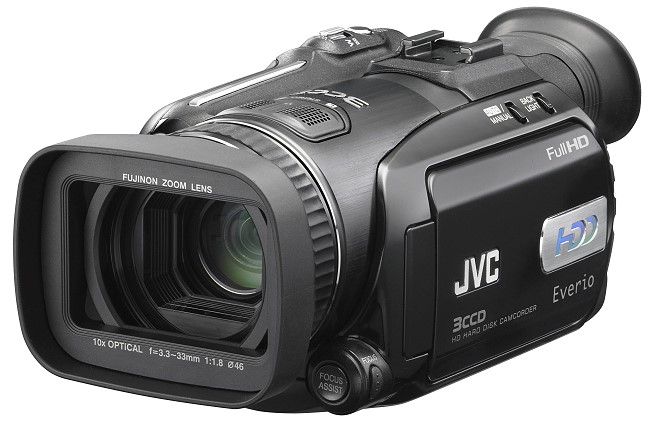 In the view shown below, you can see the hand strap on the right side. You slip your hand through the strap from the bottom, and fingers over the top.
In the view shown below, you can see the hand strap on the right side. You slip your hand through the strap from the bottom, and fingers over the top.
The large LCD viewing screen folds out on the left, and can be tilted for viewing when you have the camera at waist height, and also turned so that you can view it from the front.
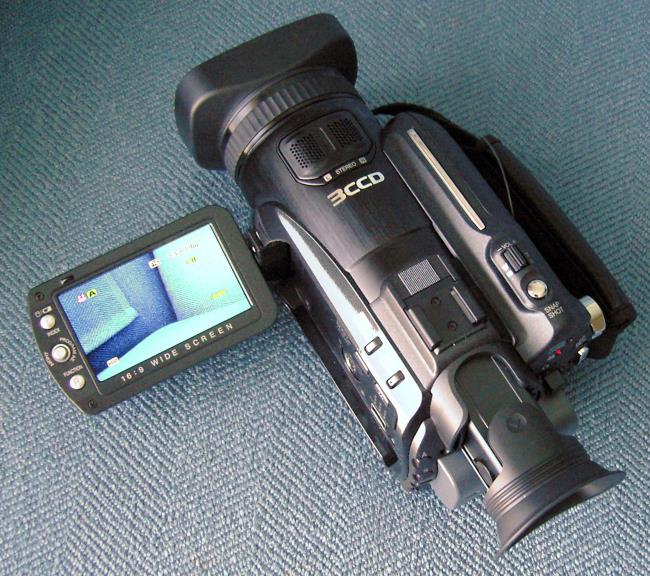 The left side has some of the control buttons, including the one that activates the setup menu on the viewing screen.
The left side has some of the control buttons, including the one that activates the setup menu on the viewing screen.
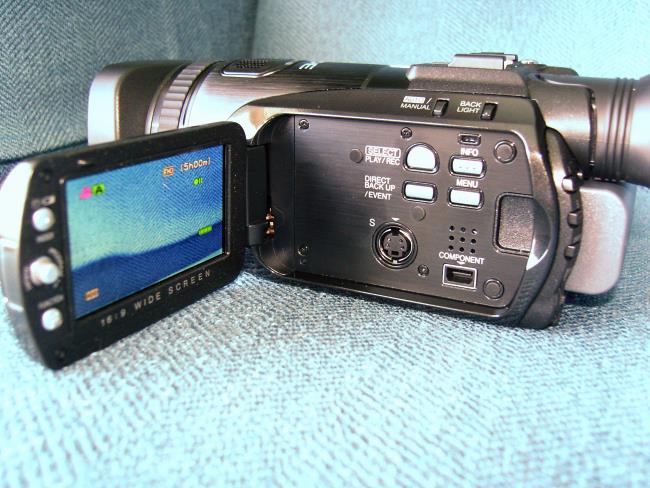 At the bottom left corner are Aperture Priority, Shutter Priority, and Brightness adjustment buttons for use in manual mode. The Menu lever adjusts the values when each of those three buttons are activated.
At the bottom left corner are Aperture Priority, Shutter Priority, and Brightness adjustment buttons for use in manual mode. The Menu lever adjusts the values when each of those three buttons are activated.
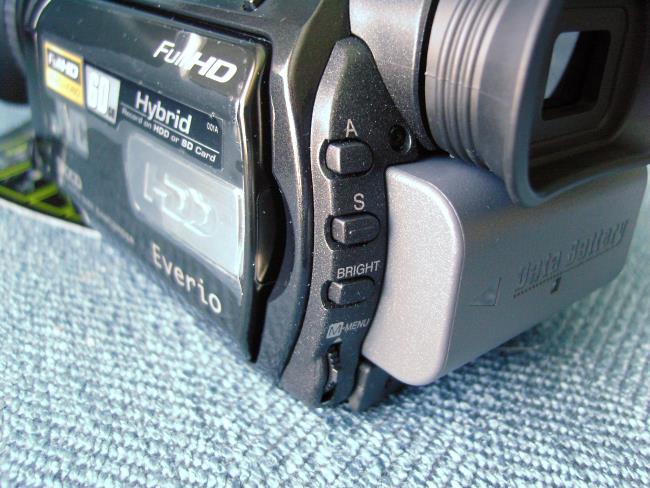 On the right side of the camera are the On/Off dial and the Record button. When your hand is in the strap, the thumb naturally rests near that button.
On the right side of the camera are the On/Off dial and the Record button. When your hand is in the strap, the thumb naturally rests near that button.
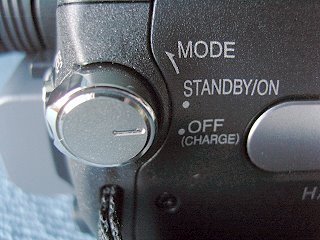
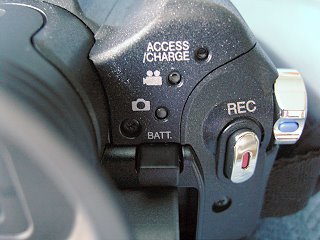 The Fujinon lens has a cover that closes to protect it when the camera is off.
The Fujinon lens has a cover that closes to protect it when the camera is off.
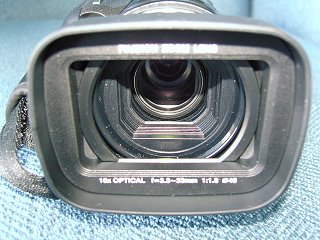
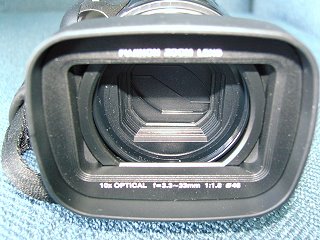 The slider for telephoto/wide angle is on the top.
The slider for telephoto/wide angle is on the top.
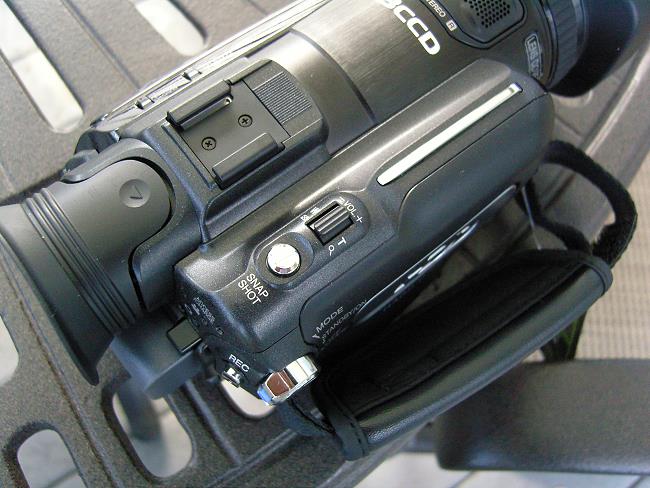 The menu structure is shown below.
The menu structure is shown below.
The first one is simply what you see on the screen while you are using the camera. It tells you that you are in Video mode (rather than snapshot mode), Automatic rather than Manual, Full HD, 5 hours of recording time available, Paused rather than recording, and the battery is fully charged.
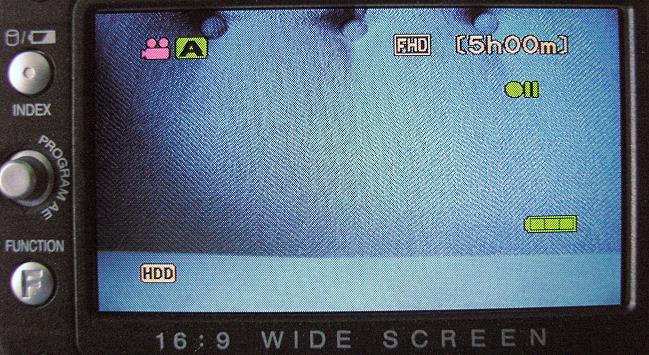 Housekeeping activities include formatting the drive and deleting files. While tape has a continuous set of video information, the HDD cameras store each scene (pressing the Record button, recording a scene, then pressing the Pause button) as a file in its own folder. The extension is *.tod. So, when you are ready to move everything to your computer for editing, all of the folders get uploaded to your PC. Each one has to be opened individually. The extension appears to be rather new, as I had difficulty using any of my digital video editors to work with them. Eventually, I got Sony Vegas to open them. I anticipate that software updates will soon be available so that the programs will recognize them.
Housekeeping activities include formatting the drive and deleting files. While tape has a continuous set of video information, the HDD cameras store each scene (pressing the Record button, recording a scene, then pressing the Pause button) as a file in its own folder. The extension is *.tod. So, when you are ready to move everything to your computer for editing, all of the folders get uploaded to your PC. Each one has to be opened individually. The extension appears to be rather new, as I had difficulty using any of my digital video editors to work with them. Eventually, I got Sony Vegas to open them. I anticipate that software updates will soon be available so that the programs will recognize them.
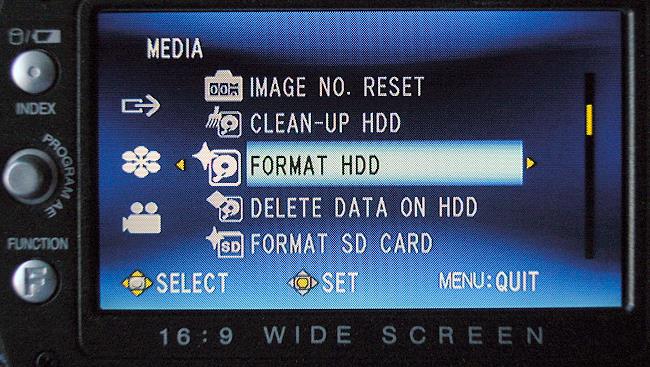 This menu lets you select the output you want to work with.
This menu lets you select the output you want to work with.
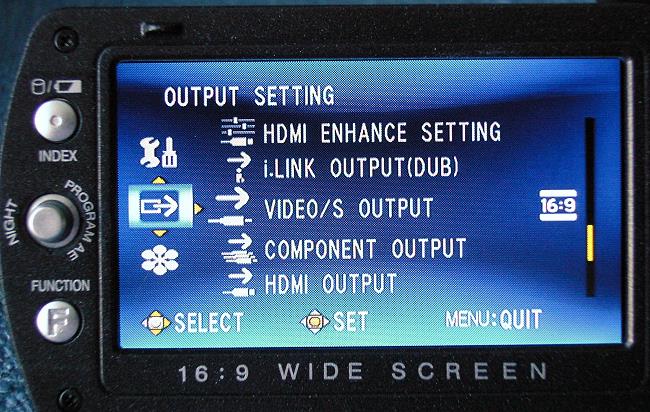 Here, you can adjust the recording volume and add a Wind Cut filter. OIS reduces the effects of hand movement during recording. There is also a Drop Detection feature that parks the hard drive instantly if you drop the camera.
Here, you can adjust the recording volume and add a Wind Cut filter. OIS reduces the effects of hand movement during recording. There is also a Drop Detection feature that parks the hard drive instantly if you drop the camera.
 We are even starting to see some professional video adjustments on consumer cameras, such as "Zebra" which is for calibrating the brightest portions of the scene so that you don't "blow out" the whites.
We are even starting to see some professional video adjustments on consumer cameras, such as "Zebra" which is for calibrating the brightest portions of the scene so that you don't "blow out" the whites.
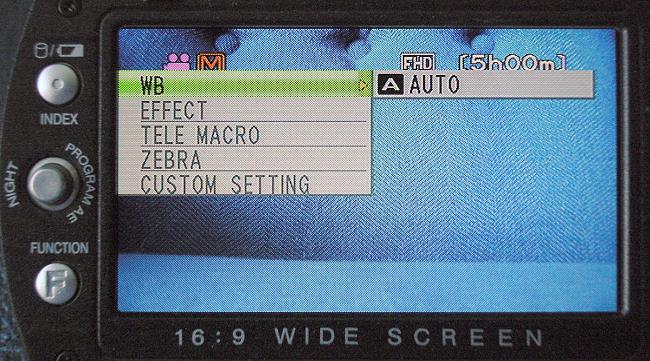 This screen shows you the recording time left in the recording mode you have selected. Note that this camera does not record in NTSC SD (640x480), but you can of course, convert an HD video to SD in your video editor.
This screen shows you the recording time left in the recording mode you have selected. Note that this camera does not record in NTSC SD (640x480), but you can of course, convert an HD video to SD in your video editor.
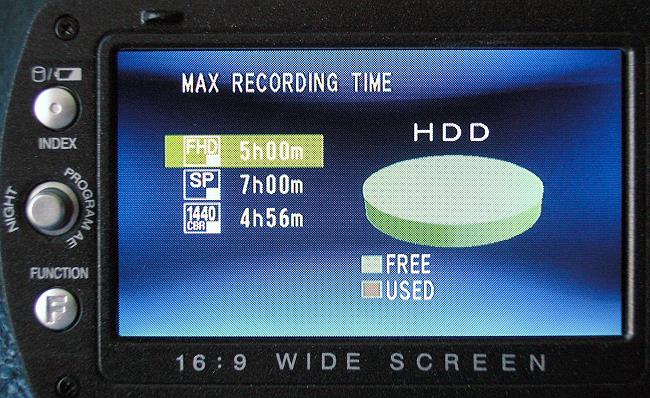

The large LCD viewing screen folds out on the left, and can be tilted for viewing when you have the camera at waist height, and also turned so that you can view it from the front.








The first one is simply what you see on the screen while you are using the camera. It tells you that you are in Video mode (rather than snapshot mode), Automatic rather than Manual, Full HD, 5 hours of recording time available, Paused rather than recording, and the battery is fully charged.







تعليق